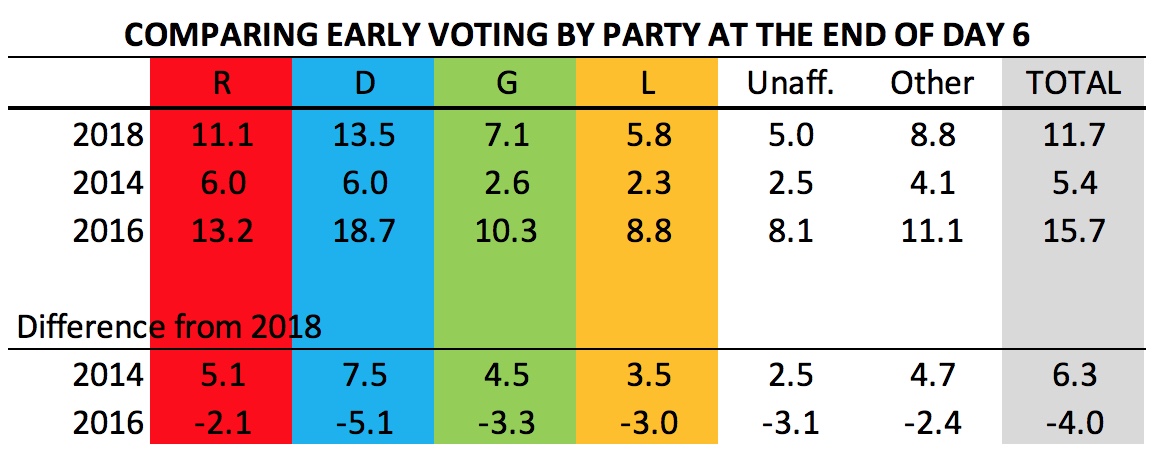Democrats remember 2014 in which lassitude among their core voters helped propel Larry Hogan into office. They’re hoping that the electorate will look more like 2016 in which Hillary Clinton carried the state by a large margin.
Using data from the State Board of Elections, the above table presents the percentage of people by party who took advantage of early voting at the end of the sixth day. It also shows changes from both 2014, the previous gubernatorial election, and 2016, the presidential election.
The statistics suggest that the 2018 electorate is unlikely to resemble closely the 2014 electorate. Democrats are joyful that early voting turnout is up a full 6.3% from 2014. Even better for Team Blue, Democratic turnout is up by even more at 7.5%.
Republicans are also turning out 5.5% higher but the lower increase means that the GOP has fallen behind. While Democratic and Republican turnout at this point in early voting was equal in 2014, Democrats have pulled into the lead this year.
Comparisons with 2016 are less favorable for Democrats. Early voting turnout this year is 4.0% down from 2016. Democratic turnout is down by even more at 5.1%. Republican turnout has decreased much less at 2.1%. However, Republicans start from a much lower base as the EV electorate in 2016 was much more lopsidedly Democratic in that year than in 2014.
The bottom line is that the early voting electorate this year is much more favorable to Democrats than 2014. But it’s also not nearly as favorable to them as the 2016 electorate.
Of course, we have to wait and see the impact, if any, on total turnout. Early voting can simply replace Election Day voting. Nevertheless, the idea suggested by the data that total turnout will end higher than 2014, not a banner year for voting or when Trump polarized and mobilized people, but not reach presidential year turnout is intuitively appealing.

